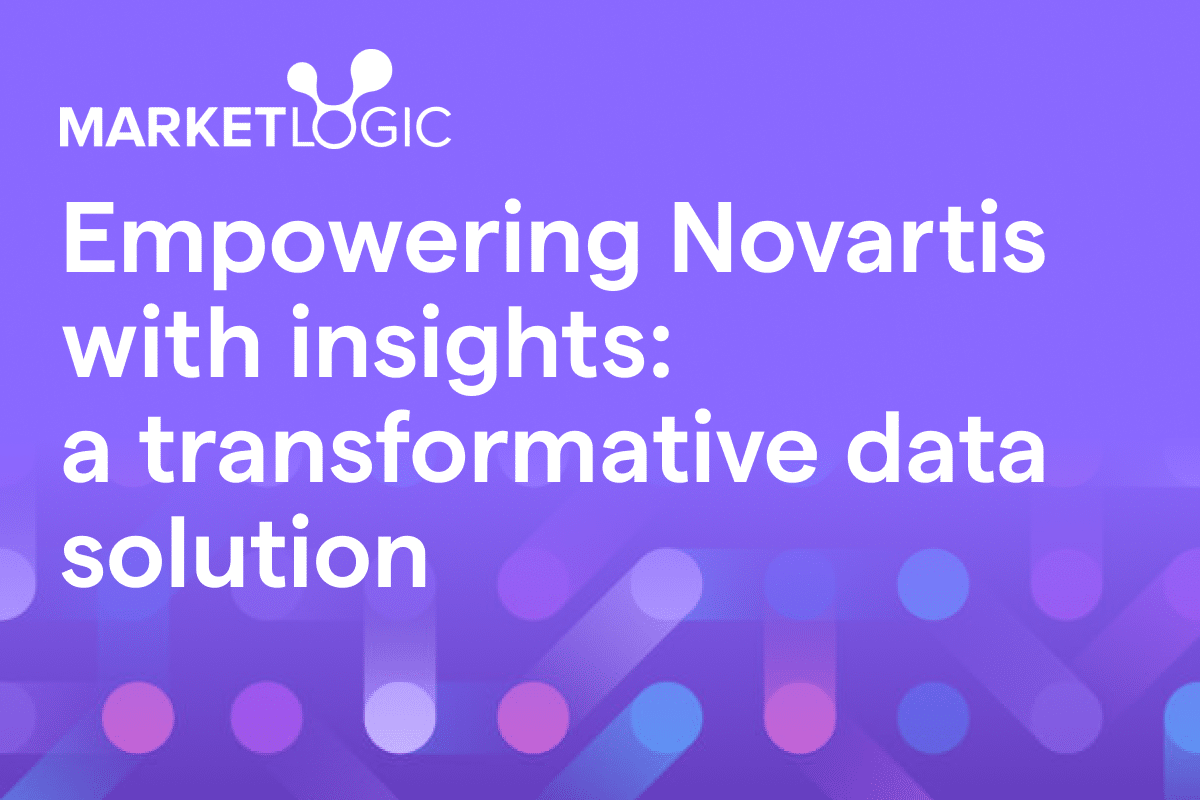Organizations face growing pressure for strategic growth in dynamic markets. Yet, according to a recent Market Logic report, 40% of business decisions are still made without incorporating market intelligence. This disconnect contributes to a staggering 41% of new products failing and highlights why 89% of marketing and product leaders agree that better intelligence significantly improves product launches and advertising effectiveness.
The separation between customer experience insights and market intelligence often creates critical blind spots. It hinders a holistic understanding, making it difficult to connect evolving customer needs with emerging market opportunities and truly drive effective strategic growth. Traditional approaches, which treat these as distinct functions focused on customer interaction versus competitive landscapes, are largely to blame for this divide.
However, integrating the two creates a unified understanding that can unlock significant, sustainable growth. Instead of fragmented perspectives, organizations can develop comprehensive strategies that align internal customer data with external market realities. This integration transforms decision-making by providing full visibility into customer needs and market dynamics.
In this article, we’ll examine the limits of siloed approaches, explore the benefits of integrating customer experience insights and market intelligence, address implementation challenges, and outline the path to sustainable growth through unified intelligence.

The limitations of siloed customer experience insights and market intelligence
Separating customer experience insights and market intelligence creates fundamental gaps in organizational understanding. These disciplines often operate independently, with distinct methods and analytical frameworks that rarely intersect, despite their complementary nature. This hinders strategic decisions that require both customer understanding and market context.
The following limitations highlight the challenges of maintaining separate approaches:
- Understanding customer experience in isolation: Customer experience (CX) research reveals the “what” and “how” of customer interactions using feedback surveys, support tickets, website analytics, and CRM data. This approach offers valuable insights into satisfaction and interaction patterns, but often lacks a sufficient market perspective. Such a narrow view is risky: customer feedback might contradict market trends, or internal metrics could indicate success even as competitive positioning weakens.
- Understanding the market in isolation: Market intelligence identifies the “where,” “when,” and “who” of the broader market context through competitor analysis, industry trends, economic indicators, and market sizing. Market research teams excel at spotting emerging trends and competitive threats, but often miss the “why” behind customer behavior and preferences. This can lead to logical strategies from a market standpoint, but fail to meet actual customer needs.
- The missed opportunities and inefficiencies: Redundant data acquisition and analysis waste resources as teams duplicate intelligence. Inconsistent or conflicting insights emerge when customer experience data suggests one direction and market intelligence another, leading to poor decisions and strategic confusion. Organizations struggle to connect customer actions to broader market shifts, missing critical signals for proactive strategies and responding slowly to emerging trends and evolving customer needs.
Ultimately, operating with disconnected customer experience and market intelligence functions leads to more than just inefficiencies; it fosters a fundamentally incomplete and often misleading view of the business environment. This type of fragmented approach directly undermines strategic decision-making, agility, and the pursuit of sustainable growth.

The synergistic power of integrating customer experience insights and market intelligence
When customer experience insights and market intelligence converge, organizations can unlock capabilities neither discipline achieves alone. This integration builds a complete understanding by linking customer behavior with market dynamics, enabling more accurate predictions, better strategic decisions, and sustainable competitive advantages.
Here’s an overview of what that integration can do:
Create a holistic customer view for deeper understanding
By combining voice of the customer (VoC) data with market context, the motivations, unmet needs, and evolving expectations driving customer behavior are revealed. This allows insights and marketing teams to dig deeper and create enhanced customer personas that incorporate market trends, competitive dynamics, and industry benchmarks with traditional demographic and behavioral data for a nuanced understanding of external influences on customer decisions.
Organizations then understand not just what customers say or do, but why they respond in certain ways to market influences, competitive pressures, and industry trends. This merging of internal customer experience data with external market intelligence yields richer customer personas and more accurate segmentation.
To truly create a holistic view of a target audience, organizations need a trusted, unified platform that connects diverse research data sources to reveal the full story behind customer behavior. DeepSights™ leverages advanced generative AI capabilities to unify customer experience data with market intelligence, breaking down silos that limit understanding. Within this ecosystem, the DeepSights WorkSpace enables teams to seamlessly curate and explore both customer and market insights together via AI-assisted curation and customizable knowledge zones. It uncovers hidden connections between customer behavior and external market trends to help teams build richer, more accurate personas and segmentation informed by a complete picture of the factors shaping customer decisions.
Identify untapped market opportunities
Identifying emerging trends and new markets is more effective when customer insights reveal unmet needs that align with market opportunities. Organizations can pinpoint gaps — where customer demand exists but market solutions are lacking — to drive innovation and proactive expansion.
Gauging new product or service viability improves when customer appetite is combined with market demand analysis, allowing concept validation against both customer feedback and competitive landscapes. The understanding of competitive positioning relative to customer satisfaction and market dynamics can reveal opportunities for differentiation that leverage customer preferences and market gaps.
By leveraging DeepSights’ natural language processing (NLP) capabilities through search queries, teams can directly search across consolidated customer experience and market research data to pinpoint unmet needs and emerging market trends. The platform’s AI-assisted data curation organizes vast information into meaningful clusters, enabling faster identification of market gaps where customer demand is not yet met. DeepSights also supports concept validation by allowing users to cross-reference customer sentiment with competitive intelligence, ensuring that innovation decisions are grounded in comprehensive evidence from both internal and external sources.
Drive enhanced strategic decision-making and operational excellence
Understanding both customer value and market opportunity enables informed resource allocation, allowing optimized investments in initiatives that meet customer needs and capitalize on favorable market conditions. Combining customer experience insights with market segmentation data leads to more effective, personalized campaigns that resonate with customer preferences and position offerings advantageously. This same integrated approach also leads to more effective, personalized campaigns that resonate with customer preferences and position offerings advantageously.
Integrated insights also cultivate strategic foresight, enabling proactive adaptation to market changes and evolving customer expectations, which builds organizational agility and resilience. This forward-looking capability is strengthened by a unified analysis of customer behavior and market trends, directly improving forecasting and resource planning. As a result, organizations can more effectively target emergent opportunities for product innovation, prioritizing features based on customer demand validated against market viability.
Strategic decision-making is enhanced through DeepSights, which enables seamless ingestion and normalization of structured data from a diverse knowledge base of market research via the DeepSights API. This foundation supports consistent, high-quality insight generation that underpins reliable analyses for resource allocation. DeepSights further streamlines operational workflows by centralizing research assets and enabling automated tagging and linking of data points, reducing time spent on manual data reconciliation. Together, these features ensure decision-makers have timely access to validated, comprehensive intelligence that guides efficient investment prioritization and operational scalability.
Overcoming the challenges of integrating your customer experience insights and market intelligence
Integrating these insights presents significant challenges requiring strategic planning and sustained organizational commitment. Organizations must address technological, cultural, and capability barriers developed over years of siloed operations.
The following challenges highlight the primary obstacles to successful integration:
- Data silos and technology infrastructure: Addressing disparate data sources and systems requires investing in the tools designed to unify, manage, and surface intelligence from diverse datasets and existing research. Customer experience data often resides in CRMs and survey tools, while market research is typically stored in knowledge bases. Integrated technologies are critical for breaking down these silos, starting with an insights platform like DeepSights, which enables organizations to consolidate their knowledge assets and foster insight discovery and utilization across teams.
- Organizational culture and collaboration: Fostering a culture of cross-functional collaboration among teams requires overcoming territorial tendencies and resistance to integration efforts that blur traditional boundaries. Addressing resistance often involves demonstrating how unified efforts can enhance, rather than threaten, existing workflows and individual team contributions. Crucially, establishing shared goals and transparent metrics for joint success helps align teams around common objectives, moving beyond conflicting departmental targets
- Skills and expertise: Developing teams with the ability to analyze and synthesize diverse datasets from multiple research data sources requires significant training investments and strategic hiring initiatives. Building internal capabilities that combine top-level analytics with strategic thinking enables teams to extract actionable insights from complex, multifaceted datasets. Actively promoting data literacy across all levels also ensures that leaders and decision-makers, not just specialized teams, can confidently interpret and act on integrated insights.

Addressing these technological, cultural, and skill-related hurdles requires a coordinated and strategic organizational effort. However, successfully navigating these complexities is not just about mitigating problems; it is a crucial investment that unlocks the full potential of integrated intelligence, paving the way for transformative growth.
The path to sustainable growth via AI-powered customer experience insights and market intelligence
Integrating customer experience insights with market intelligence marks a fundamental shift from reactive to proactive strategic decision-making. This synergy, powered by the ideal AI for insights solution, unlocks a comprehensive understanding of markets, customers, and emerging opportunities that neither discipline can achieve on its own. Organizations that harness this unified view can more effectively anticipate market shifts, understand customer implications, and make decisions based on complete insight, enabling them to decisively stay ahead of competitors.
Ultimately, this integrated approach is the key driver for sustainable growth, empowering companies to confidently pursue strategies that meet customer expectations while capitalizing on evolving market conditions.
The award-winning DeepSights platform offers transformative capabilities in one comprehensive insights platform, elevating how teams achieve strategic growth by unifying critical customer experience insights and market intelligence. This centralized knowledge management hub and its suite of tools, including DeepSights WorkSpace and DeepSights API, is specifically designed to help teams activate and leverage your organization’s existing research, transforming dispersed information into clear, actionable strategies. Request a demo today to learn more.








